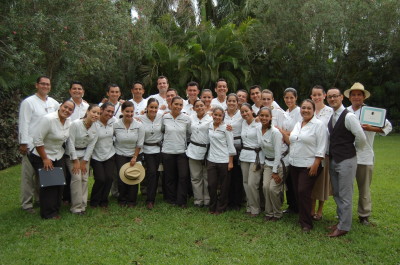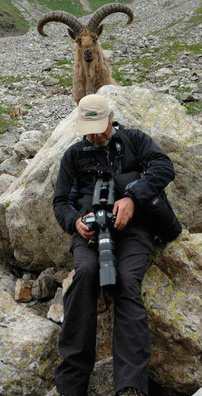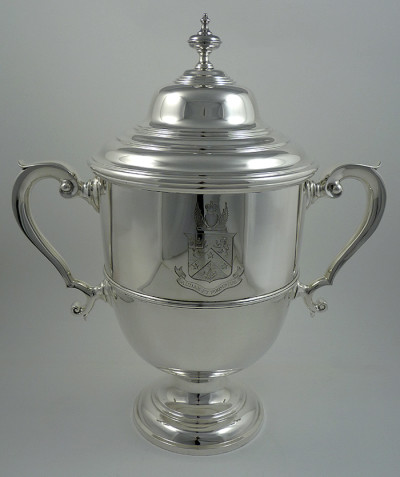The Modern Butlers’ Journal
October 2017
In its 13th year of publication
International Institute of Modern Butlers
Teaching Right Mindset, People Skills, & Superior-service Expertise
Message from the Chairman

It has been a busy year for consulting and training in the private and hospitality sectors around the world, with trainers currently in Mexico, Maldives, and the Caribbean.
Travel these days is never dull: dodging volcanoes, hurricanes, revolutions, terrorist attacks, and plane crashes, each by a day or two. In between, there are the exciting trainings and consults, and visits to myriad countries (I have lost count, but about 50 so far this year).
It occurred to me, while listening to yet another air-hostess briefing on how to buckle a seat belt, that I am now in my 64th year of airplane travel! Some things have improved, most not. Civility, levels of service, and professionalism, have taken a hit: comfort has increased only in terms of lie-flat beds in business and first classes. The planes may be slightly faster, but the delays and lines at the airports today remove that advantage. In terms of stress, whether from nature, politics, security and related threats, or human frailties, there is no comparison with the genteel experience of air travel in earlier days. The only thing that has improved is the reduced cost of travel, making air travel affordable for most.
Letters to the Editor
“Reading all the input from our colleagues in The Butlers Speak, in response to your insightful questions, has made it very refreshing to know that we do not stand alone in this big world of ours. Thanks to you and Modern Butlers, the world is a little smaller today.” PBW
One reader was angered by the “total lack of integrity and respect exhibited by Mr. Burrell for his former employer.” He added this pithy (concise and forcefully expressive) observation:
“A contract between the employer and a butler used to be based on a handshake—a guarantee by both parties to act honourably in all circumstances.
“Post Paul Burrell, the contract is signed on paper by the employer and butler with a shaking hand.” RW
Butlers in the Media
A rather touching advertisement for volunteers to help polish silver was entitled “Find your inner butler.”
This might be taking duty a bit too far as a butler: the reported presence of the ghost of Henry Ford’s butler, whose hackles rise reportedly when tourists litter his ex-employer’s property and he just has to clean up after them.
Not quite so loyal is Mr. Burrell, whose projection onto his employer of his own moroseness and morbidity, portraying her as a troubled soul, may not be based on quite as much knowledge as he professes—quite apart from the fact that he shouldn’t be saying anything at all about the employer in the first place—especially when he receives millions in remuneration for this self-centered/engrossed betrayal of confidence and the profession.
A good interview with a butler who understands the finer points of butling.
Another good interview, this one with a hotel manager of a Four Seasons, who understands that “wowing” guests comes from the caring human touches, not the latest technology.
More on AI (Artifical Intelligence)
Speaking of which, Sir Anthony Seldon, vice chancellor of the University of Buckingham in the U.K., has predicted that teaching will be conducted by robots within a decade. This assumes the development by then of emotionally sensitive machines (that will be as genuine as a three-dollar bill). There would be some benefits of some automation, to be sure, but none that outweigh the best that human teachers have to offer.
 The problem is probably best stated as the educational systems of the world have become so degraded over the last century with the substitution of social engineering for actual education, that anything might look better than what we have at the moment—which includes millions of students being drugged instead of educated, while the rest are dumbed down with curricula that only someone with questionable motives could dream up. So yes, maybe robots might look better, but then why bother with humans? Why not just program robots in the flash of a flash-drive download and just end the human race?
The problem is probably best stated as the educational systems of the world have become so degraded over the last century with the substitution of social engineering for actual education, that anything might look better than what we have at the moment—which includes millions of students being drugged instead of educated, while the rest are dumbed down with curricula that only someone with questionable motives could dream up. So yes, maybe robots might look better, but then why bother with humans? Why not just program robots in the flash of a flash-drive download and just end the human race?
The vice chancellor correctly cautioned that “individuals derive a great deal of fulfillment from their jobs and that humans are hard-wired to work,” yet he offers no solution to the prediction by Price Waterhouse Coopers that robots and artificial intelligence could take over 40% of jobs in America by around 2030.
A two-episode British documentary entitled “Hyper Evolution: Rise of the Robots” warns that robots are like an invasive species because of their increasing ability to make conscious decisions and eventually, to out-compete humans. Elon Musk, CEO of Tesla and SpaceX, has similarly raised the alarm about the risks to the human race posed by rapidly advancing AI, as have others.
We still have a way to go, according to Feiyu Xu, head of Lenovo’s AI Lab: the kind of artificial general intelligence needed for a robot butler, remains beyond reach. “A butler serving cocktails won’t be too far away, but a butler who can organise your life, help if you’ve lost something or can change your flights, these kinds of complex capabilities will take a long time [to develop].”
The Wisdom of Butlers Past, Part 5
 Another quotation about life for butlers two centuries ago shows that the more things change, the more they remain the same. We still do our best to service employers, some of whom may not be the best of role models, and continue to search for considerate employers who recognize that we, also, are alive.
Another quotation about life for butlers two centuries ago shows that the more things change, the more they remain the same. We still do our best to service employers, some of whom may not be the best of role models, and continue to search for considerate employers who recognize that we, also, are alive.
The author advises we focus on doing our duty despite the slings and arrows of less-desirable employers, because we will be happier in the long run. However, the more modern advice is to be aware that there are a very few anti-social individuals whose goal in life is to push others down; and if the employer is not just having a bad hair day but is routinely of such an ill disposition, one is better off updating the resume and looking for a new position, rather than obliging the person by sinking into apathy.
“Happy are the families where servants study the comfort and welfare of their employers, who in return do the same by them. The kind admonition of an affectionate master or mistress is always to be listened to with respect…. It may be your lot to find a master or mistress who may act unkindly or unjustly towards you…but if you do your duty, you will be more happy in your integrity than your employers can be in their injustice. I would rather be the oppressed than stand in the place of the oppressor….. Patience will be rewarded.”
“Let these considerations stimulate you to truth and faithfulness in your situations through life. You’ll find in the class of society with which you are about to associate, some of the most profligate [recklessly wasteful] of people; that is, in a refined way, if I may be allowed the expression, also some of the most proud and ignorant, glorying in their insolence and profaneness [obscene language and disrespect for religions]. Happily, they are not all so. I know a great number who are held in just esteem and have been honorably rewarded for their fidelity and good conduct.”
Extracted from the 1823 book, The Footman’s Directory and Butler’s Remembrancer, re-published in hardback by Pryor Publications. You may obtain your discounted copy (with free s&h) by emailing the publisher: Mr. Pryor (alan @ pryor-publications.co.uk) and telling him you read about the offer in the Modern Butlers’ Journal.
The Butlers Speak
Finding & Managing Staff, Part 1 of 3
Some insightful solutions to common hiring problems, from those who walk the talk.
1) Have you encountered any issues when looking for good staff? If so, what were they?
“Looking for good staff is trying at the best of times, as what one sees on paper is not what one meets in person: sadly, like so much else, it’s a numbers game.” PBW
“The most challenging issue typically is finding a candidate who is genuinely ready, willing, and able to perform the duties for which they have been hired. Many will, sadly, say what they think you want to hear, when in fact they are opposed to, or inexperienced in, specific tasks.” CH
“Most applicants have not worked in a very large residence and are not accustomed to the different types of surfaces to clean such as granite, marble, soap stone, etc., nor have they been exposed to the level of expense associated with furnishings in such a household. Similarly, they are unfamiliar with security measures, such as all exterior doors and entrances being locked at all times, and not opening the front door until we know who is there.” NS
“One of the biggest obstacles to finding top talent in our area of California is the cost of living: The nearest affordable housing is at least an hour’s drive away. Convincing employers to extend a high cost-of-living allowance that would allow staff to rent locally, is a tough sell in most cases. Another problem is that most employers don’t want an employee who must be moved in from out of town: Not only do they express a dissatisfaction with having to pay for moving expenses, but they also do not want to make a commitment to that employee: The freedom to fire without conscience is too important for them.” SA
2. What areas or avenues have proven most fruitful for finding staff?
“Using recommendations has worked well, as has a local agency that screens potential applicants before we interview them.” NS
“Anyone can be good during an interview, saying the right things, giving the right answers. But the proof is in the pudding as they say: So what I have found to work over the years is to invite the candidate to spend a day with us, paying them for the day, and covering any travel expenses. We offer them lunch with the rest of the team and see how they interact with everyone. It’s a two way street we feel: they see what is expected and we see what they can do.” PBW
“Certain placement agencies are excellent resources, but finding a qualified candidate by word of mouth is not an avenue to be disregarded.” CH
“First and always: word of mouth and networking. It was true before agencies and it’s still true now. But failing that, careful interviewing of agency owners will reveal whether they’re capable of identifying a service mentality, and comprehensive personality assessments / matching of both employee and employer. Only a handful of agencies nationwide know anything more about their candidates than what is given in the resume. It takes time and perception to handpick your candidates, and then match them to the employer with a reasonable success potential. An agency worth considering will give a one-year free employee-replacement guarantee.” SA
3. What procedures do you employ for ensuring that the right staff are selected? 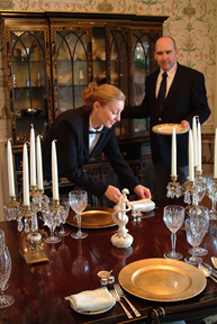
“We do a background check on everyone, as well as a credit check–very important when working at a large residence. Any time we have deviated or made exceptions we’ve experienced unfortunate outcomes. We have learned from these experiences, however, so when we hire new staff, they are hired as an independent contractor. After a year, they are evaluated and we determine whether to hire on the person as an employee. This process has worked very well for us. NS
“By having them spend the day with us, I see them in action.” PBW
“Without question, a paid working trial of three-to-five days has proven the most effective way of ensuring a proper selection. I also put their skills to the test, such as asking them to iron a table linen, prepare a special dish, spot clean a rug, or wax a vehicle.” CH
“We conduct multiple interviews with three pre-qualified candidates. Each interview is conducted under different conditions. One might be a dinner engagement where table manners are subtly scrutinized and driving habits can be observed (you travel to the restaurant together in the candidate’s car.) Another might be lunch with the candidate with a partner/spouse, a best friend, or even a parent as guest. Another might be a leisurely walk about the estate, seeking comments about every aspect of service, loyalty, discretion, and privacy that the candidate holds dear. In all instances, we make lots of eye contact and observe body language.” SA
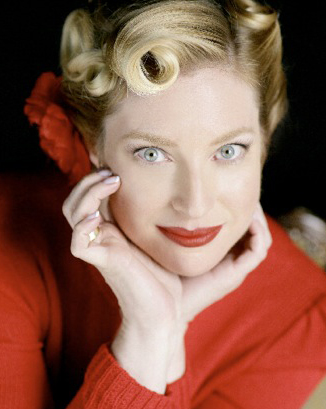 Book Review of Serving the Wealthy
Book Review of Serving the Wealthy
Sections on the Role of the Butler and the Principal’s Wines, Part 6 of 12
Dealing with Wine Sensitivity
by Gretchen dePillis
As Serving the Wealthy suggests, it is useful to note the preferences of the principal’s guests. When serving wine, you may note that some guests may experience “headaches” shortly after consuming a glass of wine. Others may have an asthmatic reaction.
Sulfites can trigger an asthma attack in some people, but as commercial wines can contain up to sixty different additives, it may not be easy to discover all the additives used by the vineyard, as most countries only require the listing of “sulfites” on the labels of wine bottles.
For such guests, you may wish to consider a wine from a biodynamic vineyard, and note this information in their guest preferences database.
Next month, we will review how to find the biodynamic vintage that is appropriate for your employer’s guests.
Ms. dePillis is a freelance contributor to the Journal who is based on the West Coast of the United States. She can be reached via depillis @ gmail.com
Creative Corner
 How to create a Strawberry Flower
How to create a Strawberry Flower
by Kobi Gutman
Adding garnish to a plate is a little touch that makes a big difference to the presentation. Here is a quick and easy garnish for a turndown treat, a fruit plate, or even (if covered with chocolate) a treat that can be served on its own.
- From about half the height of the strawberry, make a
 slice down towards the base. Don’t go through but stop
slice down towards the base. Don’t go through but stop
a little bit before the base. This will create a petal.
- Using the knife,
 gently push the petal out, being careful
gently push the petal out, being careful
not to break it. You can roll the knife over the tip of the
petal to add a more realistic effect.

3. Repeat the above two steps to create three more petals.
- Make another layer of petals by cutting closer to the top of the strawberry and slicing
 down to half the height of the strawberry. Each petal in this layer should be located between two petals in the bottom layer – that is, not directly above them.
down to half the height of the strawberry. Each petal in this layer should be located between two petals in the bottom layer – that is, not directly above them.
- Place as garnish and serve.

Mr. Gutman is the head butler at a private hotel in Florida and can be reached via the Institute.
Let’s Talk about Mixology, Part 26

will be forthcoming in November—Mr. Vargas just returned from a lengthy assignment abroad to assist the very next day with the delivery of his second child, Gala. Our congratulations to both Amer and his wife, Sonia, and best wishes for the future.
Mr. Vargas is the Institute’s President—feel free to contact him via email, AmerVargas @ modernbutlers.com
Consulting the Silver Expert
Cleaning and Polishing Silver, Part 5
 by Jeffrey Herman
by Jeffrey Herman
Use the following technique if you are polishing an object without porous components or components that have been sealed with Renaissance wax:
Rinse the object first to remove any pollution that may have settled on the object. These contaminants, which may be more abrasive than the polish you will be using, can actually scratch the silver if rubbed into the surface.
Apply Blitz Silver Shine Polish or Earth Friendly Silver Polish. If you feel it necessary to protect your hands from moisture, use nitrile gloves which contain no ingredients that tarnish silver. Do NOT use latex gloves!
Rub the object in a straight, back-and-forth manner so as to maintain a uniform appearance. Avoid rubbing in a circular motion.
Rinse the sponge regularly, as elements in the tarnish can be very abrasive.
Dried polish can be removed by patting the area with a warm, wet cotton ball or a wet horsehair or natural-boar-bristle brush.
Rinse the object with warm water, and then dry with a Selvyt cloth or cotton dish towel immediately to avoid spotting.
I advise using untreated heavy-weight cotton inspection gloves to avoid finger prints when cleaning and storing freshly cleaned objects.
Note: Flattened cotton-swab heads, with very little silver polish applied, are excellent for cleaning between fork tines.

Mr. Herman continues to offer his services to our readers for any questions you may have about the care of silver. Either call him at (800) 339-0417 (USA) or email jeff @ hermansilver.com
The Institute is dedicated to raising service standards by broadly disseminating the mindset and superior service expertise of that time-honored, quintessential service provider, the British Butler, updated with modern people skills, and adapted to the needs of modern employers and guests in staffed homes, luxury hotels, resorts, spas, retirement communities, jets, yachts & cruise ships around the world.”



